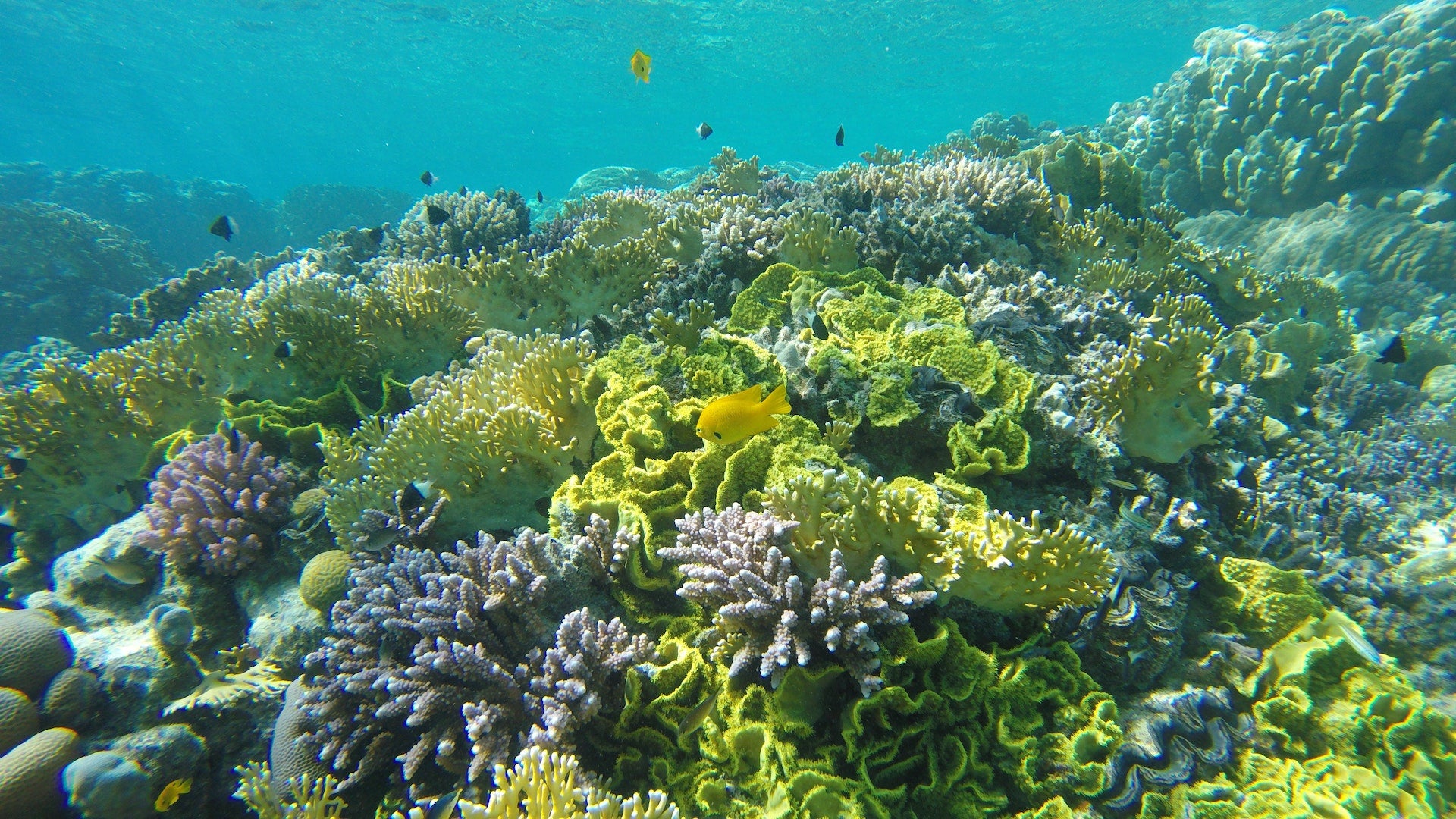"The economy of fish oil is a very essential consideration. When a manufacturer is forced to use less oil, such as the condition we have recently experienced, he cannot make as much paint--or profit." - Mattil, W. H., Oil & Soap (July, 1944).
In 1940, unsaturated oils like fish oil, soy oil, safflower oil, and linseed (flaxseed) oil were used to make paints, varnishes, and various other wood oil finish products. Once chemists figured out how to make the same products using petroleum, but for much cheaper, these well established oil farming and processing industries had to find another way to sustain profits and repurpose the oils.
Around the same time, farmers began to experiment with feeding livestock with these crops from the paint industry, and found that the animals were fattened up much easier using less food. This was the beginning of how these foods began to be marketed towards humans. Distracting from the fattening effects of these foods and oils, the marketing slogan of "no cholesterol" was promoted, under the false pretense that dietary cholesterol is harmful for human health, and it still exists to this day.
In the article "Fish oil in the protective coating field" (Mattil, 1944) quoted above, the author explains how they would use the most unsaturated oils as "fast drying" finishes that solidified into plastic like coatings that were more weather resistant. The chemical reaction he was referring to is called lipid peroxidation, which is the oxidation, or the rancidification of a fatty acid, when it is exposed to oxygen, heat, and/or light. The susceptibility of a fatty acid to lipid peroxidation is dependent on how many double bonds the fatty acid has. 
In this diagram, you can see that the saturated fatty acid molecule is fully saturated with Hydrogen, with no double bonds (open spaces) for oxygen, heat, light, and free radicals to attach and degrade the molecule. When these things react with the double bonds in the monounsaturated (MUFA) and polyunsaturated fatty acids (PUFA), lipid peroxidation is the result.
So, the same transformation from oil to plastic-like coating in the paints and varnishes, happens in our heat and oxygen filled body when we consume these types of fats. This is called lipofuscin. Excess iron also combines with this product to make it more progressive and harmful. Once you understand this, in combination with mineral balance, you're well on your way to understanding the main drivers of biological aging.
When lipofuscin accumulates from a lifetime of consuming PUFAs from:
- fried foods
- fast food
- oils added to just about every grocery store food product (cereals, breads, snack bars, chips, dips, spreads, granola etc.)
- nut butters
- nuts/seeds
- cooking in vegetable/seed oils,
- cold-water fish
- iron fortified foods (every wheat product in North America)
it can progress to the point where it is visible on the skin.

Often called "liver spots", "age spots", or "age pigment", what you're seeing on the person's hand is exactly lipofuscin [16]. Once it gets to this point, you can bet that the person's insides are caked in it, from the cells, to the heart, liver, arteries, and more.
This disease has many names in the medical literature:
yellow fat disease, steatitis, fatty liver disease, fatty liver, age 50 effect, black kidney, blue kidney, bovine renal lipofuscinosis (BRL), brown atrophy of neuronia, brown atrophy of the heart, brown atrophy of the liver, brown fat disease, brown heart disease, cardiac necrosis, cumulative lipofuscinosis, embryonic death syndrome (from mom’s use of omega 3s), fatty necrosis, granulomatous steatitis, hepatic dietetica, hepatic steatosis, lipofuscinosis, necrotizing granulomatous steatitis, nonalcoholic fatty liver disease, non-suppurative pansteatitis, nutritional fat necrosis, nutritional muscular dystrophy, nutritional myodegeneration (NMD), nutritional myopathy, osteohaematochromatosis, pansteatitis, pansteatosis, pigmentary atrophy of the heart, progressive lipofuscinosis, shrunken heart disease, steatosis, stiff calf disease, stiff lamb disease, watery hide disease, waxy liver disease, waxy yellow fat disease, white fat disease, white muscle disease, xanthomatosis, xanthosis, atherosclerosis.
But its all the same thing.
Singh, et al, (2010) says that "Lipid peroxidation leads to the formation of a number of aldehydes by-products, including malondialdehyde (MDA), 4-hydroxy-2-nonenal (HNE), and acrolein". These are the breakdown products of oxidized unsaturated fats, and they increase the susceptibility of oxidative stress, inflammation, diabetes, Alzheimer's, dementia, cancer, aging, cardiovascular disease, and autoimmune conditions [2-6]. Omega 3 and 6s also have a well documented carcinogenic and tumorigenic role in animal studies [5, 11-14].
What can we do about it?
Even though most of us have consumed PUFAs in high amounts for our entire lives, and supplemented with Omega 3 in the name of 'health', not all hope is lost.
Vitamin E is our primary defense against the oxidation of these fats. Raederstorff, et al, (2015) say "the vitamin E requirement increases almost linearly with the degree of unsaturation of the PUFA" and "It will be prudent to assure an adequate vitamin E intake to match the increased PUFA intake, especially as vitamin E intake is already below recommendations in many populations worldwide.".
Valk and Hornstra (2000) add that "The antioxidant function of vitamin E is critical for the prevention of oxidation of tissue PUFA".
In reference to Vitamin E, Weglicki et al., (1968) state "Deficiencies of this vitamin promote accumulation of lipofuscin in a variety of tissues".
So not only can we take away that Vitamin E is our first line of defense, but also that the more PUFA we consume, and have consumed for our entire lives, the higher our Vitamin E requirements will be.
What are the safest fats to consume?
The safest fats to consume would be the ones that have the highest levels of saturation. Saturated fat, and MUFA, from foods such as:
- Coconut/coconut oil/MCT oil
- Grass fed dairy products (butter, ghee, milk, cream, etc)
- Grass-fed ruminant meat (beef, buffalo, bison, elk, venison)
- Pasture raised eggs
In moderation:
- Olives, Olive/oil
- Pasture-raised poultry
- Pasture-raised pork
- Avocado
I don't recommend conventionally raised meat, especially fatty chicken or pork. These cheaply raised animals are typically fed very high PUFA diets in order to fatten them up at a low cost, mainly consisting of soy and corn. Ruminant animals like cows have four stomach chambers to ferment their food and convert these PUFAs into saturated fat, but chickens and pigs do not have the same biological filtration systems. Therefore, the end product will have much more of that PUFA in it.
What else can we do?
The liver plays a huge role in detoxing PUFAs with a process called glucuronidation. So how do we support the liver?
- Eating carbohydrates and (animal) protein frequently
- Not skipping breakfast
- Choline (Vitamin J) from egg yolks
- Fructose from fruit
- Not fasting/intermittent fasting
- Not restricting carbohydrates (SUGAR)
- Limit PUFAs as much as possible (full avoidance is impossible)
Lastly, throw the Omega 3 supplement in the trash, or use it to finish your latest woodworking piece.
References:
1. Mattil, W. H. (1944). Fish oil in the protective coating field. Oil & Soap, 21(7), 197–201. https://sci-hub.se/10.1007/bf02544171
2. Wang Y, Cui P. Reactive Carbonyl Species Derived from Omega-3 and Omega-6 Fatty Acids. J Agric Food Chem. 2015 Jul 22;63(28):6293-6. Epub 2015 Jul 9.https://sci-hub.se/10.1021/acs.jafc.5b02376
3. Singh M, Dang TN, Arseneault M, Ramassamy C. Role of by-products of lipid oxidation in Alzheimer's disease brain: a focus on acrolein. J Alzheimers Dis. 2010;21(3):741-56. https://sci-hub.se/10.3233/jad-2010-100405
4. Glauber H, Wallace P, Griver K, Brechtel G. Adverse metabolic effect of omega-3 fatty acids in non-insulin-dependent diabetes mellitus. Ann Intern Med. 1988 May;108(5):663-8. https://sci-hub.se/10.7326/0003-4819-108-5-663
5. Olivo SE, Hilakivi-Clarke L. Opposing effects of prepubertal low- and high-fat n-3 polyunsaturated fatty acid diets on rat mammary tumorigenesis. Carcinogenesis. 2005 Sep;26(9):1563-72. Epub 2005 May 11. https://sci-hub.se/10.1093/carcin/bgi118
6. Nicholls SJ, Lincoff AM, Garcia M, et al. Effect of High-Dose Omega-3 Fatty Acids vs Corn Oil on Major Adverse Cardiovascular Events in Patients at High Cardiovascular Risk: The STRENGTH Randomized Clinical Trial. JAMA. November, 2020. https://jamanetwork.com/journals/jama/article-abstract/2773120
7. Csallany AS, Ayaz KL, Su LC. Effect of dietary vitamin E and aging on tissue lipofuscin pigment concentration in mice. J Nutr. 1977 Oct;107(10):1792-9. https://pubmed.ncbi.nlm.nih.gov/903824/
8. E.K. Winstanley, V.W. Pentreath. Lipofuscin accumulation and its prevention by vitamin E in nervous tissue: Quantitative analysis using snail buccal ganglia as a simple model system, Mechanisms of Ageing and Development. Volume 29, Issue 3,1985, 299 307. https://pubmed.ncbi.nlm.nih.gov/3990384/
9. Weglicki, W. B., Reichel, W. and Nair, P. M. (1968)J. Gerontol. 23,469-475.
10. Davies I, Fotheringham AP. Lipofuscin--does it affect cellular performance? Exp Gerontol. 1981;16(2):119-25.
11. Noguchi M, Rose DP, Earashi M, Miyazaki I. The role of fatty acids and eicosanoid synthesis inhibitors in breast carcinoma. Oncology. 1995 Jul-Aug;52(4):265-71.
12. Sasaki T, Kobayashi Y, Shimizu J, Wada M, In'nami S, Kanke Y, Takita T. Effects of dietary n-3-to-n-6 polyunsaturated fatty acid ratio on mammary carcinogenesis in rats. Nutr Cancer. 1998;30(2):137-43. Erratum in: Nutr Cancer 1998;31(2):151.
13. Carroll KK. Dietary fat in relation to mammary carcinogenesis. Princess Takamatsu Symp. 1985;16:255-63. https://pubmed.ncbi.nlm.nih.gov/3916197/
14. Cave WT Jr. Dietary n-3 (omega-3) polyunsaturated fatty acid effects on animal tumorigenesis. FASEB J. 1991 May;5(8):2160-6.
15. Carroll, K K et al. “Dietary fat and mammary cancer.” Canadian Medical Association journal vol. 98,12 (1968): 590-4.
16. Danse LH, Steenbergen-Botterweg WA. Enzyme histochemical studies of adipose tissue in porcine yellow fat disease. Vet Pathol. 1974;11(6):465-76. doi: 10.1177/030098587401100601. PMID: 4156983.
17. Danse LH, Verschuren PM. Fish oil-induced yellow fat disease in rats. I. Histological changes. Vet Pathol. 1978 Jan;15(1):114-24.
18. Raederstorff D, Wyss A, Calder PC, Weber P, Eggersdorfer M. Vitamin E function and requirements in relation to PUFA. Br J Nutr. 2015 Oct 28;114(8):1113-22. Epub 2015 Aug 21.
19. Valk EE, Hornstra G. Relationship between vitamin E requirement and polyunsaturated fatty acid intake in man: a review. Int J Vitam Nutr Res. 2000 Mar;70(2):31-42.
20. Bässler KH. On the problematic nature of vitamin E requirements: net vitamin E. Z Ernahrungswiss. 1991 Sep;30(3):174-80. https://sci-hub.se/10.1007/BF01610340
21. Villaverde C, Cortinas L, Barroeta AC, Martín-Orúe SM, Baucells MD. Relationship between dietary unsaturation and vitamin E in poultry. J Anim Physiol Anim Nutr (Berl). 2004 Apr;88(3-4):143-9.



Comment4
Thank you for this article, great info
I have one question: what about, back in the day, when our grandparents and great grandparents swore by a teaspoon of cod liver oil? Is there a difference between fish oil and cod liver oil?Thanks again,
Pam
Very interesting and thank you for bringing this to light. Do you recommend any other sources of DHEA or EPA ? Is krill oil the same?
Very informative. I think you have my answer😉. My hands look like that picture!
I have many fatty lumps on my body such as elbows, arms,legs and GP says not to worry about it but I have multiple compared to a few years ago and I am concerned
Hello,
Any thoughts on Rosita Fish Oil supplements? I just ordered some and I also just ordered some Vitamin E from Lifeblud.